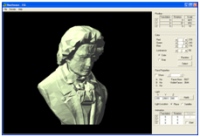Hi, I am IT student and I have to make a project in VB6, I was thinking to make a 3D Software Renderer but I don't really know where to start, I found a few tutorials but I want something that goes in depth with the maths and algorithms, I will like something that shows how to make 3D transformations, Camera, lights, shading ...
It does not matter the programing language used, I just need some resources that shows me exactly how to make this.
So I just want to know where to find some resources, or you can show me some source code and tell me where to start from.
Or if any of you have a better idea for a VB6 project.
Thanks.
